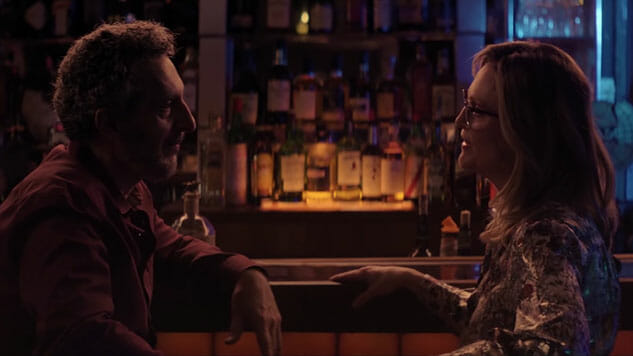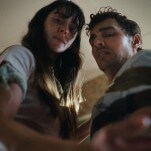Gloria Bell
Images via A24/Youtube
Over 20 years after studio execs were surprised by the success of the 1995 Clint Eastwood/Meryl Streep romance The Bridges of Madison County, American mainstream cinema still seems afraid to tackle love and sexuality for those above “a certain age.” Which might be why writer/director Sebastián Lelio embarked upon a scene-by-scene, almost shot-by-shot remake of his bittersweet and life-affirming Chilean dramedy Gloria, this time with an American setting and one of the greatest American stars of her generation.
The 2013 Gloria is a slice-of-life tale about the 59-year-old titular divorcee (Paulina Garcia) who enjoys going to bars that play ’70s disco. Her fully grown children have moved on with their lives, leaving her to ponder the emptiness of the latter half of her time on Earth. Refreshingly devoid of a traditional plot and any forced conflict, Gloria instead studies how such a character can enjoy the ups and downs of life even after her family has left her behind.
With this year’s Gloria Bell, we more or less get the same thing, but this time Lelio wisely taps into an older American audience looking to see representation they don’t get much from their cinema, especially the kind that doesn’t condescend or patronize. A lot of Hollywood films dealing with middle-age love—How Stella Got Her Groove Back and Something’s Gotta Give, for example—still treat it with the aesthetics of teen romance, full of impulsive excitement and youthful energy. We may expect the first time Gloria (Julianne Moore) and her theme park owner boyfriend Arnold (John Turturro) hold hands to be a dramatic moment, shown through soft focus close-up, yet Lelio sticks to a wide shot and barely attracts attention. Same goes with sexuality: Where we expect sparks to fly once the couple see each other naked for the first time, Lelio hard cuts to Gloria topless, casually having an existential discussion with Arnold in bed. These characters have been to this rodeo many times before, and their needs and expectations are different from those in the throes of youthful romance. On the flip side, Lelio lingers throughout on quiet moments capturing a quick glance or a long, loving stare that communicates compassion and mutual connection.
-

-

-

-

-

-

-

-

-

-

-

-

-

-

-

-

-

-

-

-

-

-

-

-

-

-

-

-

-

-

-

-

-

-

-

-

-

-

-

-








































